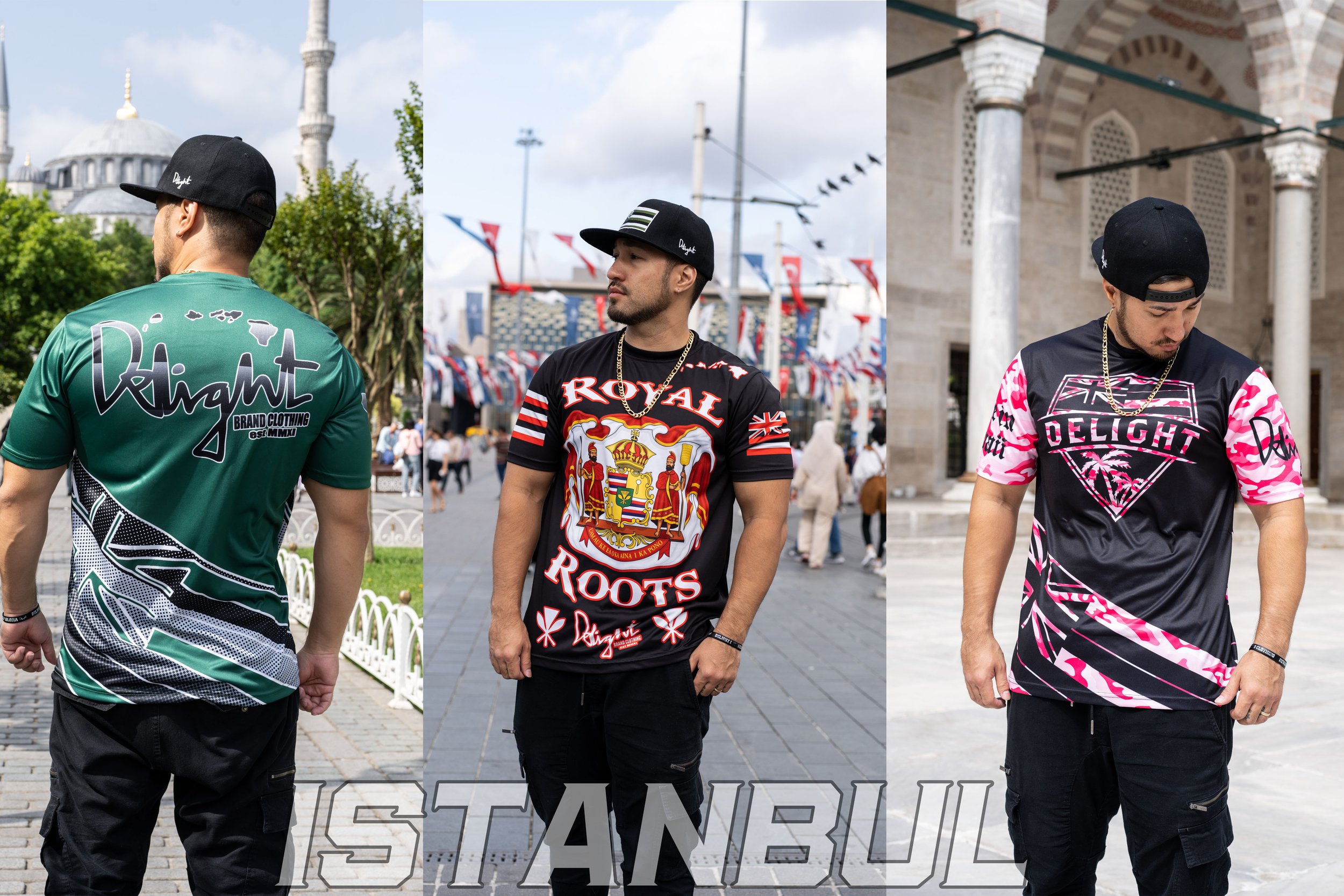How Fabric Choices in Branded Clothing Affect Comfort and Style
How Fabric Choices in Branded Clothing Affect Comfort and Style
Blog Article
The Relevance of Sustainable Clothing: Just How It Influences the Atmosphere and Your Wardrobe
Sustainable clothes is progressively acknowledged for its essential duty in minimizing the environmental impact of the quick garment industry. By concentrating on green materials and moral production approaches, it addresses pushing environmental issues. This change not just benefits the earth yet likewise affects customer choices, bring about a more thoughtful technique to closet monitoring. Comprehending these characteristics increases crucial inquiries regarding fashion's future and individual duty in shaping it.
The Environmental Impact of Rapid Style

Advantages of Lasting Materials
Sustainable products use significant advantages, particularly through environment-friendly material choices that minimize ecological injury. These materials likewise demonstrate resilience and longevity, lowering the demand for regular replacements. As an outcome, they add to a more sustainable style market and promote liable customer actions.
Eco-Friendly Fabric Options
While the fashion sector has long been connected with fast fads and environmental damage, the increase of environmentally friendly textile selections presents a transformative possibility. Lasting materials such as natural cotton, hemp, and Tencel have obtained appeal due to their reduced environmental effect. These textiles are often generated without damaging chemicals and need much less water, reducing their carbon footprint - Branded Clothing. Additionally, lots of environmentally friendly materials are eco-friendly, contributing to a round economy by decreasing waste. Choosing lasting materials not only sustains environmentally liable practices but likewise advertises healthier ecological communities. As consumers come to be much more knowledgeable about their purchasing power, the demand for green materials encourages brands to innovate and adopt more sustainable manufacturing techniques, inevitably benefiting the planet and future generations
Durability and Durability Benefits
Lots of consumers are significantly recognizing the sturdiness and long life advantages of lasting products in their apparel options. Unlike standard materials, sustainable materials such as organic cotton, hemp, and recycled polyester are engineered to endure wear and tear, resulting in garments that last much longer. This minimized frequency of replacement not only saves consumers money in time however additionally lessens waste generated by fast fashion. Furthermore, lasting apparel typically utilizes green manufacturing methods that enhance textile stamina, contributing to a reduction in the general carbon footprint. By buying sturdy clothing, consumers can cultivate an extra lasting closet while appreciating top notch items that maintain their aesthetic and functionality with time. Resilience and long life stand as vital benefits of picking lasting materials.
Minimizing Waste Through Sustainable Practices
Minimizing waste in the apparel industry can be attained through ingenious practices such as upcycling and repurposing products. Additionally, taking on minimalist closet strategies motivates consumers to prioritize quality over amount, ultimately lowering clothes consumption. Together, these approaches contribute significantly to a more sustainable apparel design.
Upcycling and Repurposing Materials
Upcycling and repurposing products have actually emerged as cutting-edge techniques in the apparel industry, changing disposed of fabrics into important brand-new products. This strategy not only lessens waste yet also motivates creative thinking and individuality in garments design. By taking old garments and materials, developers can create special items that reflect personal style while lowering the need for new resources. In addition, upcycling commonly requires less energy and water compared to conventional production procedures, considerably reducing the ecological impact of style. As customers come to be extra mindful of sustainability, the appeal of upcycled garments continues to increase, advertising a circular economic situation. Ultimately, these techniques contribute to an extra sustainable future, where fashion focuses on ecological health over quick production and intake.

Minimalist Wardrobe Strategies
As individuals progressively seek to reduce their environmental effect, adopting minimal wardrobe approaches has actually obtained grip as a reliable technique to sustainable fashion. These strategies emphasize top quality over amount, motivating customers to curate a smaller sized collection of flexible, resilient clothing. By focusing on classic items that can be blended and matched, people can reduce the regularity of purchases and ultimately decrease waste.Additionally, minimalism advertises conscious usage, urging customers to review the ecological and honest implications of their selections. This technique not only promotes a more lasting lifestyle however also simplifies daily decision-making regarding clothes. As people welcome minimalist concepts, they add to a style society that values sustainability and responsible consumerism, inevitably bring about a much more eco-conscious society.
The Duty of Honest Labor in Sustainable Fashion
While many customers are increasingly knowledgeable about the ecological repercussions of their clothing selections, the importance of moral labor practices in sustainable fashion can not be forgotten. Ethical labor encompasses fair earnings, safe working problems, and respect for employees' rights, creating the backbone of accountable style production. Brands that prioritize moral labor not only boost neighborhoods but likewise established a requirement for responsibility in the industry.Moreover, the assimilation of ethical methods fosters openness, allowing consumers to make educated selections regarding their purchases. This method contrasts greatly with fast fashion's unscrupulous labor versions, which typically focus on earnings over people. By supporting business devoted to moral labor, consumers add to a system that values human dignity together with ecological sustainability. Subsequently, moral labor is not merely an add-on; it is important to the broader mission of sustainable style, ensuring that the pursuit for eco-friendliness does not come at the expenditure of human civil liberties.
The Impact of Lasting Clothing on Carbon Emissions
Lasting garments has the prospective to significantly reduce carbon exhausts related to the garment industry. Typical garment manufacturing contributes notably to greenhouse gas exhausts, mostly because of energy-intensive manufacturing procedures and the use of non-renewable resources. In comparison, lasting fashion concentrates on environment-friendly materials, such as natural cotton or recycled fibers, which often call for less power to produce.Moreover, lasting brand names tend to adopt more i thought about this reliable production practices, reducing waste and lowering general emissions. By focusing on resilience and classic style, lasting clothing urges consumers to get much less frequently, additional reducing the carbon footprint connected with overconsumption.Additionally, numerous sustainable brand names are committed to openness in their supply chains, enabling customers to make educated selections that align with their worths. Ultimately, moving in the direction of sustainable garments can lead to a substantial decrease in carbon emissions, adding to a healthier world and an extra lasting future for the apparel industry.
Sustaining Neighborhood Economic Climates With Lasting Selections
The shift toward sustainable garments not just addresses ecological concerns however likewise considerably advantages regional economic situations. By choosing sustainable fashion, customers frequently sustain small click here to find out more companies and local artisans, enhancing area durability. These business normally run on a smaller scale, prioritizing workmanship and moral techniques over mass production.Investing in locally made lasting apparel cultivates work production and stimulates economic development within communities. As customers come to be more familiar with the ecological influence of their purchases, they progressively look for products that reflect their values. This demand urges neighborhood manufacturers to take on sustainable practices, contributing to a circular economy.Moreover, supporting neighborhood businesses decreases transportation emissions, straightening with eco-conscious customer behavior. The interconnectedness of lasting apparel and regional economic climates highlights the necessary function that individual choices play in promoting both ecological and economic wellness. By promoting these local links, areas can prosper while also functioning in the direction of a more lasting future.
Changing Your Wardrobe: Tips for a Sustainable Closet
As people look for to reduce their environmental influence, transforming a closet into a sustainable closet ends up being a necessary step. One efficient strategy is to examine existing clothing, maintaining just items that are put on on a regular basis and that line up with sustainability goals. Focusing on quality over amount is essential; investing in sturdy pieces from environmentally friendly brand names can greatly decrease waste.Additionally, including second-hand products can revive a closet while reducing ecological damage. Organizing clothes swaps with close friends or donating unused products can better promote sustainability.When shopping, individuals should look for materials that are organic, recycled, or biodegradable, and avoid quick fashion merchants - Branded Clothing. Exercising conscious intake by attentively taking into consideration each purchase can contribute to a more lasting lifestyle. By executing these suggestions, one can develop a closet that mirrors individual style while sustaining ecological stewardship
Frequently Asked Questions
Exactly How Can I Identify Sustainable Clothes Brands?
To identify sustainable clothing brands, one ought to research materials utilized, check for accreditations like Fair Profession, and take a look at the brand's openness about their manufacturing procedures, labor practices, and environmental influence, making sure environmentally friendly and honest methods are focused on.
What Are the Expenses Related To Sustainable Fashion?
The expenses connected with sustainable style can vary considerably. Higher manufacturing costs, ethical sourcing, and environmentally friendly materials typically result in increased list prices, which might discourage some consumers while interesting eco mindful shoppers.
Can Sustainable Apparel Be Stylish and stylish?
Lasting clothes can without a doubt be elegant and trendy. Developers increasingly focus on innovative products and ethical manufacturing methods, confirming that fashion and sustainability can exist together. Consumers currently have varied choices that blend looks with ecological awareness.
How Does Laundering Garments Affect Their Sustainability?
Washing garments greatly impacts click to investigate sustainability by consuming water and power, contributing to contamination, and causing microplastic release. Constant washing can deteriorate textiles, shortening their lifespan and boosting the demand for replacements, eventually exacerbating ecological concerns.
What Is the Life Expectancy of Lasting Apparel Compared to Quick Style?
The lifespan of sustainable garments usually goes beyond that of quick style items, frequently long-term several years because of top quality materials and workmanship. On the other hand, quick style garments might degrade rapidly, demanding more constant replacements. Sustainable apparel is progressively identified for its critical function in decreasing the environmental impact of the fast fashion industry. While many consumers are significantly mindful of the environmental repercussions of their clothing options, the importance of ethical labor practices in sustainable style can not be forgotten. Branded Clothing. Lasting apparel has the possible to substantially reduce carbon exhausts linked with the fashion market. In contrast, lasting fashion focuses on environmentally friendly materials, such as natural cotton or recycled fibers, which often call for less power to produce.Moreover, sustainable brand names often tend to embrace more effective production techniques, decreasing waste and reducing overall discharges. By focusing on resilience and timeless style, sustainable clothing urges consumers to get much less frequently, additional lowering the carbon impact linked with overconsumption.Additionally, numerous lasting brand names are committed to openness in their supply chains, allowing customers to make educated selections that line up with their worths
Report this page